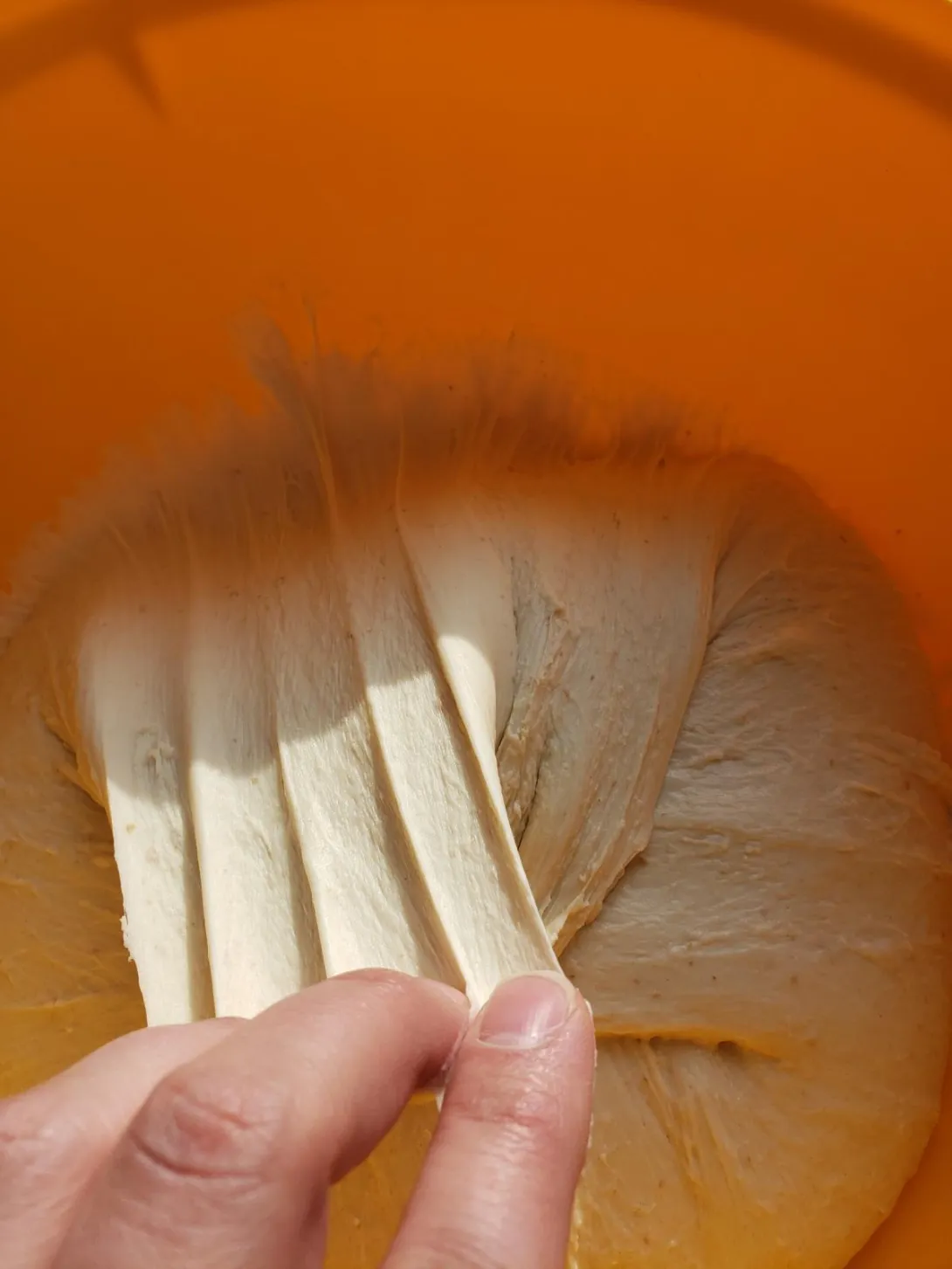
I have been making a starter and it was doing okay i think. I wasn't being very rigid with it, but it was living and smelled amazing. I am currently trying to create bread with it. I have low hopes as of the stage of mixing it into dough as it just seems off but I will update this when I get closer to the end.
A few hours later...
Its not going well, it's dough but there's not much for rising after the initial 12 hr starter rise (bulk rise?) and then a 3 hr regular rise after kneading. Its still a very slack dough as well. Hydration is maybe off? Gah... I hope my next attempt goes better. 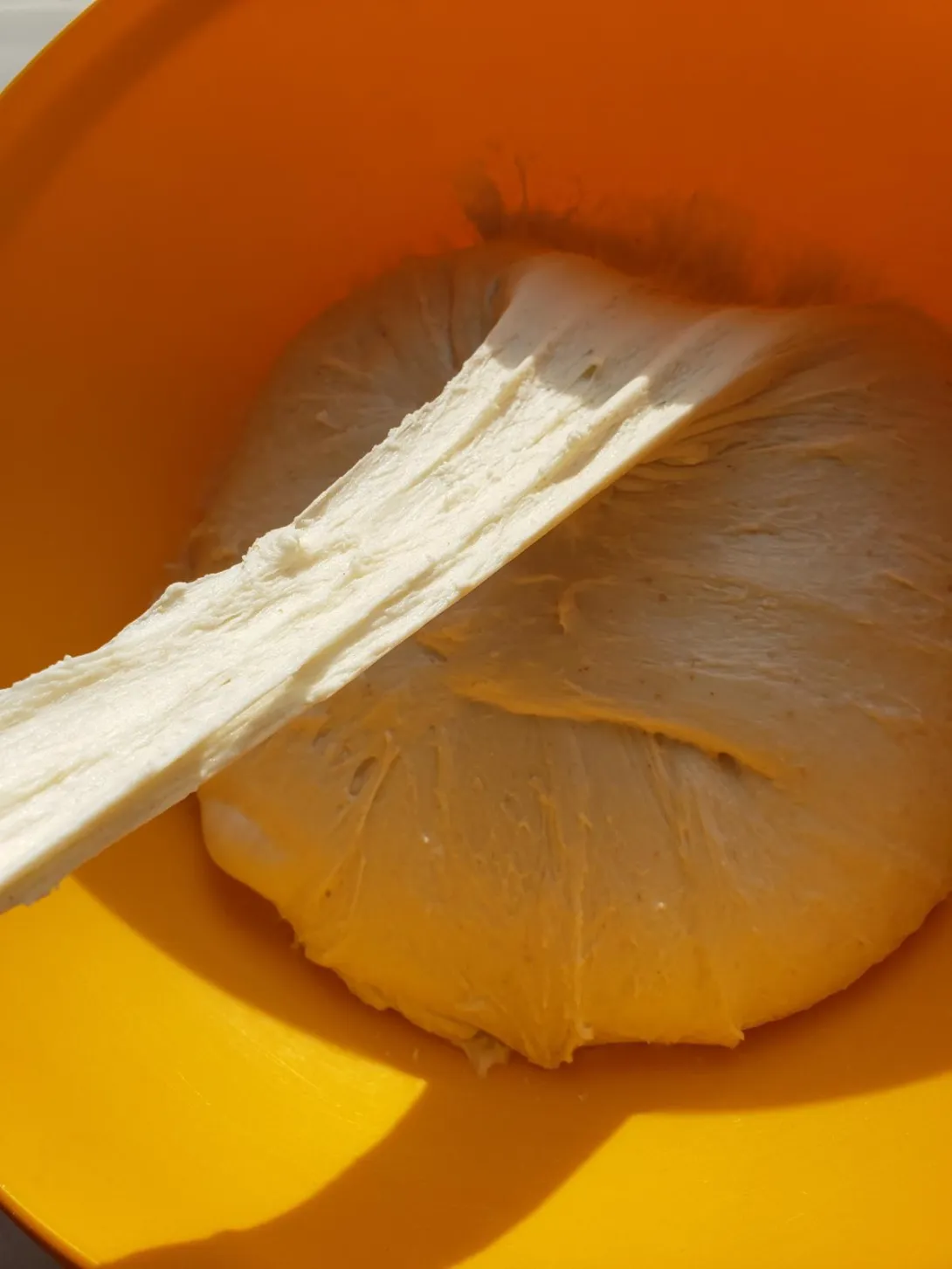
I think another contributer is that it has been cold in the house lately... But other than throwing this mess out, what can I do?
Update* Well I've gone ahead and formed it into loaves, hopefully after it proofs I'll feel better but it's still not seeming great.
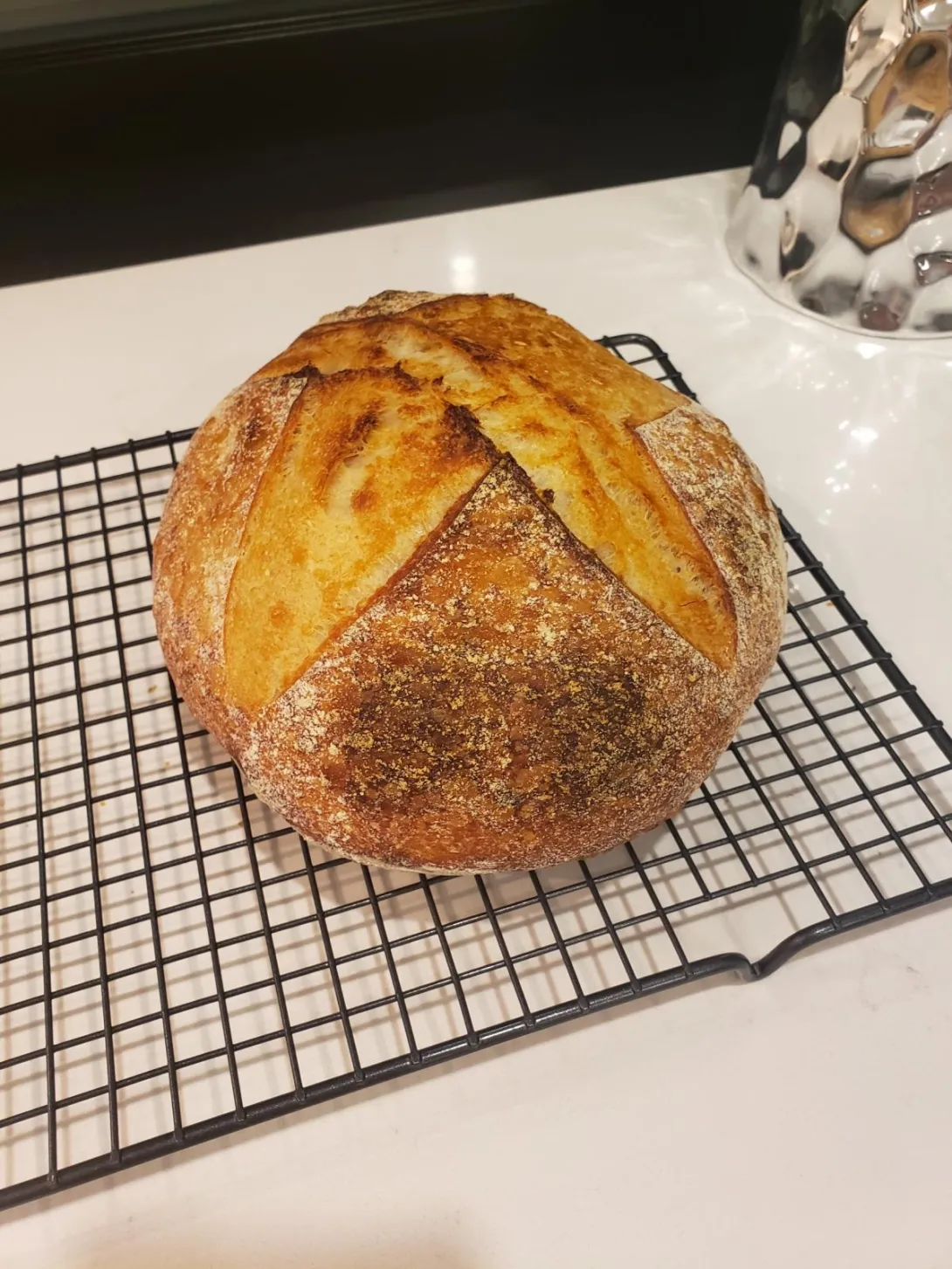
Well, the first loaf is out the oven... Man I am so curious about the crumb on this guy.
So... The crumb... Was weird and very gummy.
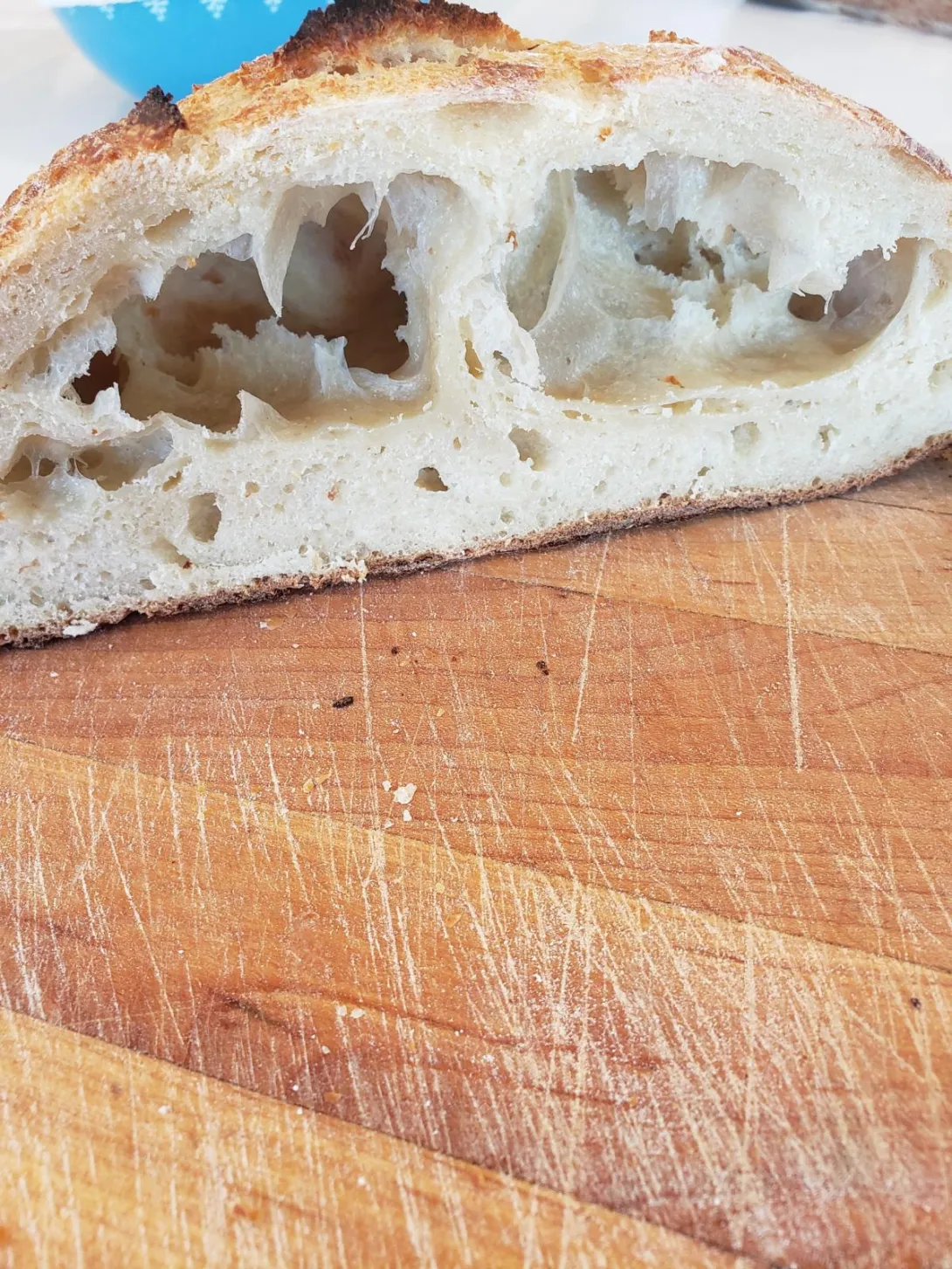
- Dabbler's Blog
- Log in or register to post comments
and daren't lend any advice till we see the crumb and hear what you think of the taste. Would also like to hear a brief history of your starter.
My starter, I have it 100% hydration, and I only was feeding every other day, I discarded once in the week. It was about a week and a half old when I baked with it.
I've woken up today with the intent of discarding and feeding every day for a while until it regains strength though.
I’d say based on the crumb and the outward appearance of your loaf that your dough was underfermented.
Although there are obvious broken gluten strands in those large tunnels in the crumb, the rest of the crumb is typical of underfermented bread, dense and likely somewhat gummy.
I’d look at your starter first. Your starter needs to be strong to create a good levain that can properly leaven a dough. I only feed my starter once per week but it lives in the fridge for that week. It would be good to get your starter stronger. What do you feed your starter? I like feeding my starter whole rye which creates really strong starters. 100% hydration is fine and is easiest to mix. For the next few days, keep your starter out at room temperature and feed it 1:1:1 or 1:2:2. Allow it to fully peak, you’ll know it has peaked when the dome just starts to flatten a bit. At that point discard and feed again. If you do this for a few days, refrigerating only to get through the night, then your starter should be much stronger.
I know Abe will reply with a more detailed post so I’ll leave that to him to share.
Benny
As you posted yours Benny. We've said the same thing. Fully agree... just needs more regular TLC. Another week I would imagine and the results will be much improved.
Your starter isn't ready! And from the photos of the gluten breakdown it's too acidic. More TLC with discarding the old, spent, too acidic starter and more regular feedings with fresh flour and water will fix this.
Start off 1:1:1 at a 12 or 24 hourly schedule. Repeat the feed only when you see activity! If it peaks within 12 hours then every 12 hours if not then every 24 hours.
Once your starter can peak everytime it is fed 1:1:1 at 12 hourly intervals then go onto 1:2:2. Same instructions. Once it has no problem in bubbling up and peaking within 12 hours every time it is fed then try again.
When your starter is more balanced, not overly acidic and has a healthy population of yeast you won't get this gluten degradation, it'll be a stronger dough with a more even crumb.
I look forward to your next bake.
Thankyou everyone for the help. I too am looking forward to what the next bake will bring!
I currently leave it on the counter and feed equal parts flour and water. 1/2 WW and 1/2 AP.
Edited to add: I haven't been weighing my remaining starter, but have been matching it for volume with feedings.
By volume it would be....
At least once a day but if it bubbles up within 12 hours then twice a day. Begin with 1:1:1 and progress onto 1:2:2. Try again in a week.
What you've experienced is very common so nothing to worry about. A simple switch in maintenance is all it needs.
I mean, I keep 4 ounces and add 60g water and 60g flour.
2:1:1
And how has it been reacting? Bubbling up on cue?
Measurements are good to convey a method but eyeballing is fine. Not much to tell from the photo. Can't see where the starter was at straight after the feed to gauge how much it has risen. Any chance of a photo from above? How much has it risen?
Leave it for now and for the next feed try 1:1:1 and see how it reacts over 24 hours.
It has not risen at all yet since the last feed.
Should there be activity that quickly?
Very thin? Is it like a thick batter or wallpaper paste?
I'd say like pancake batter.
12 hours after the last feed just add wholegrain flour. Enough to thicken it up into a stiff batter then leave it and see how much it rises.
Sounds like a plan! Thankyou so much for your time helping me out here.
If all goes to plan hopefully you can try again in another week. We'll play it by ear. Let me know how it fares after the next feed. After adding more flour make a note of how much it has risen over 12-24 hours.
Life did not allow me to get that extra feed of flour in last night, but I fed it this morning. There was definitely a layer of moisture on top after the 24 hours. I'm assuming it was waste from eating all of the food. I'm going to attempt to get in that extra flour feed tonight.
Clear or murky?
It was clear.
Hooch, from a starving starter, would be murky. Might be a good idea to thicken up your starter with your next feed.
Sounds good! Thankyou again for your help!
to at least 75°C or a few degrees warmer. This makes a big difference. You mentioned the house was cold. How cold?
It's not super cold, but my air temp is pretty consistently 72°
I've discarded 1/2 and mixed my starter up to playdough consistency today. There were more bubbles today than yesterday, but it doesn't rise at all now. Patience is the key I suppose.
What might have happened is you jumped the gun, misinterpreting when the starter was ready, because while starters can have an initial burst of energy they often go through a quiet stage after that. You've given it a good feed now and it might be a good idea to not feed till you see significant activity again whether it takes a day or two or even three. Till then keep warm and give it a good stir once or twice a day.
So... It sounds like what I was doing in the beginning was in fact an acceptable way to go? Feed it flour every couple of days, or when it gets "loose", and only discard when it doubles... I have moved it to the window so it'll at least see some sun on occasion and get the temp up a bit. Maybe once it's rising regularly I can start adjusting things more than that.
I have to admit, I haven't been keen on discarding every day.
I'll just keep soldiering though this quiet stage.
Often the quick off the mark bacteria aren't the ones we want in a sourdough starter. With feedings, which often needs some discarding, the good bacteria show up in greater numbers, the pH level of the starter drops becoming acidic killing off the bad bacteria making way for good bacteria and yeasts to thrive. So the initial burst of energy looks the part and while it is a necessary step it's not ready to bake with yet. Often people mistake the quiet stage as the starter going kaput. In fact while it looks dormant or dead things are happening. So at this stage it's a good idea to slow down a bit after all if one starts throwing starter away and adding fresh flour and water while it's trying to ferment it'll only be counterproductive.
Now you have a chance to take a break. Instead of feeding just stirring is fine. A good place to keep a starter is on top of the fridge if there is space. Fridges give off heat and it's the right temperature for a starter. 75-78°F is a nice sweet spot for a starter.
Well... it's definitely quiet, but not dead. I see the occasional bubble of reassurance.
The top of the fridge is a good tip. I won't be able to do that for long though as we are getting built-ins installed next month. But hopefully I'll be baking with it by then. :/
Lots of people quit this stage. You really need to ride it out. Keep stirring twice a day at 12 hourly intervals. If after a few days it begins to get very liquidy then just add some flour to thicken it back up again. Otherwise leave well alone. Any chance of a photo?
Here it is, I stirred it this morning.
But probably from stirring. What does it smell like?
It doesn't have much of a smell :/
And we'll take it from there. If you want I can send you Hamelman's recipe for making a starter if you wish to begin another while you wait. This way if it doesn't come into fruition you've got a head start.
I'm gonna keep waiting this one out. I'm not in a big rush anymore and have grown to accept that this is a journey, not a race. Lol.
At the end of the day the starter dictates when it's ready. Offer is always open though if you need to make another. For now enjoy your rest from feeding it. While you wait have you thought about making yeasted breads with a poolish for extra flavour?
I checked it this evening and it is not quite doubled. Maybe 1.5x what there was this morning and there's plenty more bubbles. That's definitely the most activity there's been in the last week.
Very good sign. Once it comes out of its slumber it normally goes from strength to strength quite quickly. Leave it for now and see how much it rises. Once it has peaked (don't worry about not catching it perfectly on time and if it happens through the night then the next morning....) give it a feed of 1:1:1.
Keep it at 1:1:1 every time it peaks. If once every 24 hours then feed it every 24 hours. If it peaks within 12 hours then feed it every 12 hours. Once it has no issues bubbling up within 12 hours on schedule then switch to 1:2:2 etc. When it can peak within 12 hours every time with a 1:2:2 feed then it's time for another try at baking a loaf.
Added a bit of flour this morning and it's looking really nice this evening here. Just starting to fall it looks like. I'll give a stir after supper and continue just minding
Image
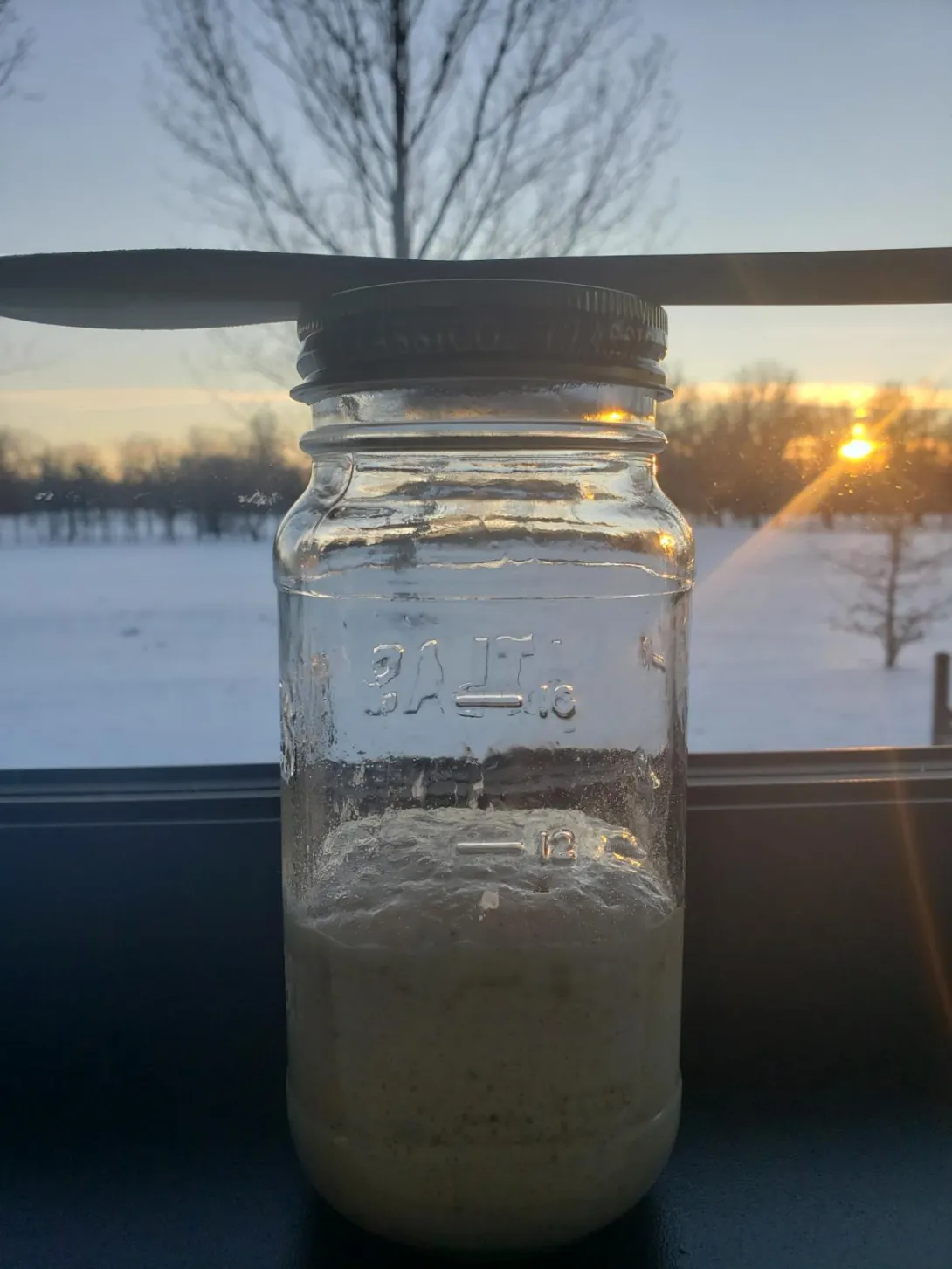
it for a while yet. Hopefully try to bake with it in a weeks time.
What a difference a day makes! You'll be baking before long. I'll say you can try again in the next few days if it goes from strength to strength but if you can't manage then definitely the weekend. Keep monitoring and if by bed time it does begin to fall then give it another feed. If not then perhaps take it down from on top of the fridge and put it in a cooler place till the morning when you can feed it again and put it back on top of the refrigerator.
Now we're 100% sure you did have an initial bubbling up which were the quick off the mark bacteria but when you tried to bake you caught it in it's quiet period which often happens but is perfectly normal. Your next bake will be far better! In the meantime start thinking of a recipe you'd like to try.